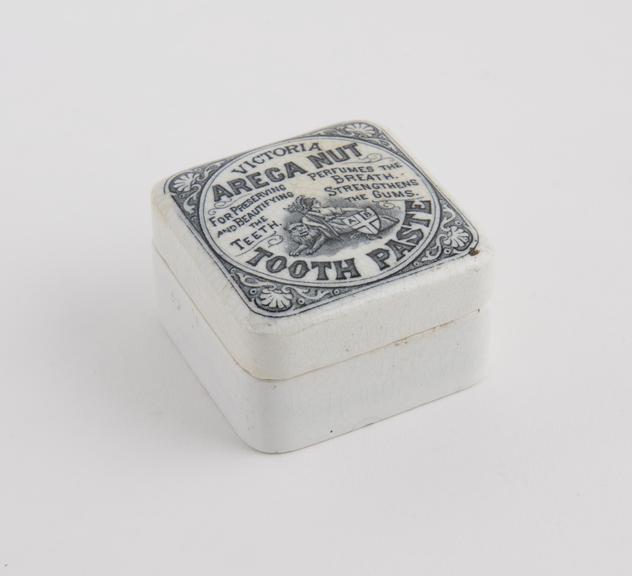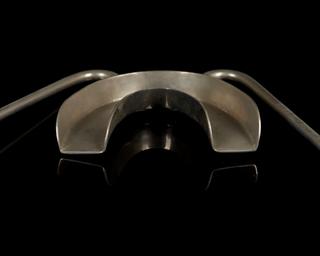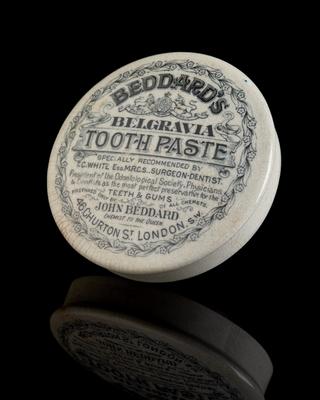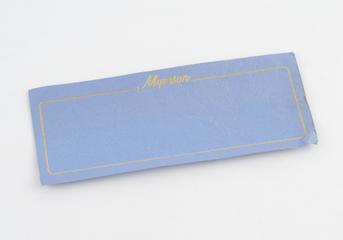




Creamware toothpaste pot, English, 1860 to 1895
A growing range of tooth powders and toothpastes began to be commercially available in the middle years of the 1800s. This pot would have contained 'Victoria toothpaste’ made from Areca nuts. Native to India, areca nuts have long been used in ayurvedic medicines. Here, the nut was used to clean the teeth, freshen the breath and strengthen the gums as well as prevent tooth decay. The Areca nut was only used in English toothpastes and powders.
Victoria is probably a reference to Queen Victoria (1819-1901). It was a typical advertising technique used to imply that the queen used this type of toothpaste, suggesting that it must be of the highest quality.
Details
- Category:
- Dentistry
- Collection:
- Sir Henry Wellcome's Museum Collection
- Object Number:
- A606153
- Materials:
- pottery, creamware
- Measurements:
-
overall: 37 mm x 63 mm x 63 mm, .21kg
- type:
- toothpaste pot




